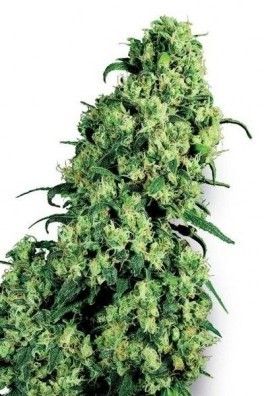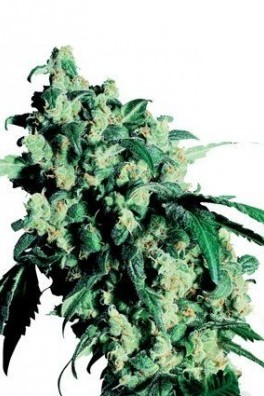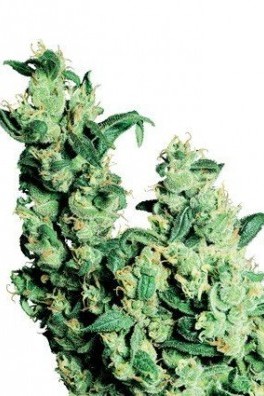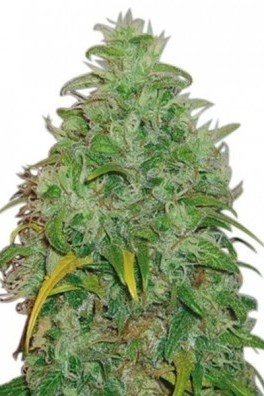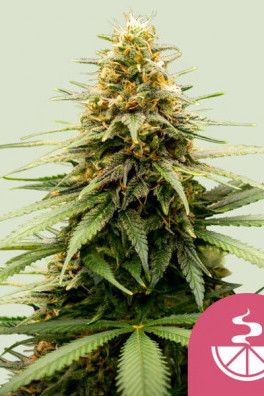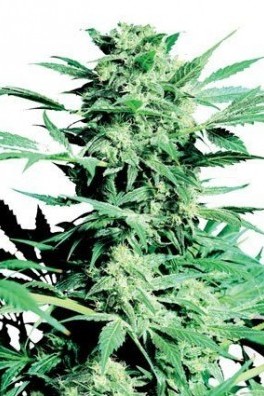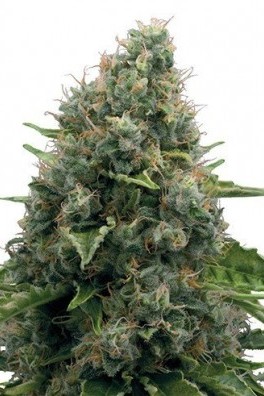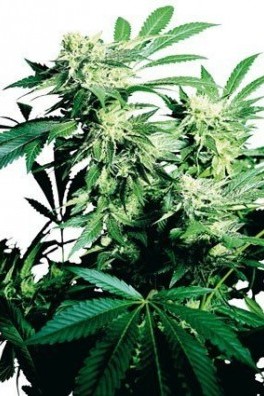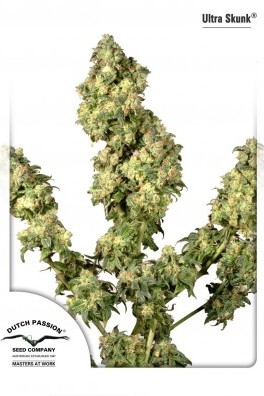Cannabis legends: The origins of Skunk
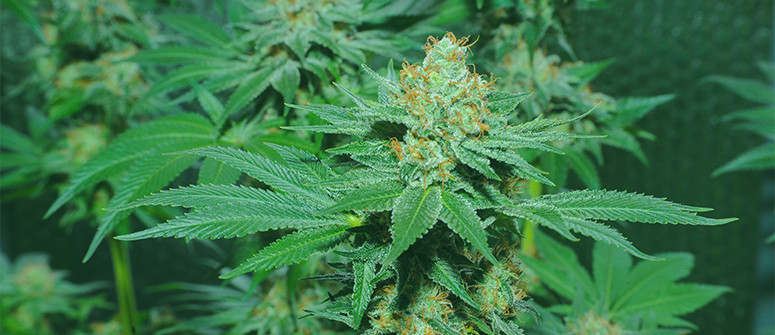
Learn all about the origins and impact of the legendary Skunk cannabis strain. Created in the 1970s, Skunk continues to influence the landscape of modern breeding. Whether you're a grower or connoisseur, it's important to familiarise yourself with this strain's history, and to become acquainted with some of the best Skunk hybrids around today!
Contents:
When we talk about cannabis classics, few varieties carry as much weight as Skunk. With its initial release reaching back into the 70s, Skunk’s pungent aroma and uplifting effects represent, for many, the pinnacle of the cannabis experience. But what exactly is Skunk weed, how did it come to be, and what made it so desirable? Keep reading to learn all of this, and more.
What is Skunk cannabis?
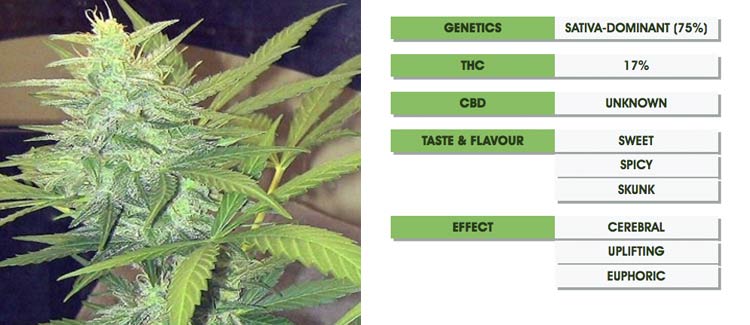
Skunk is a cannabis variety first bred in the US in the 1970s. While countless breeders have created a plethora of Skunk strains since then, the creation of the original Skunk variety is attributed to the breeder David Paul Watson, better known as Sam the Skunkman. Together with the infamous Haze Brothers and other growers/breeders of the time, Sam played a pivotal role in the hybridisation of cannabis—a practice now considered standard.
Under the moniker Sacred Seeds Collective, Sam and a group of other growers produced the world's first hybrid cannabis strains and the now-iconic Skunk #1, which many consider the first high-potency hybrid weed strain. Before this point in time, cannabis breeding was still in its infancy, and most cultivators weren't familiar with the idea of crossing different cannabis plants and hunting down/stabilising phenotypes the way they do nowadays.
Sam created his original Skunk #1 through a meticulous process of crossing Colombian Gold and Acapulco Gold, two landrace sativa varieties from Colombia and Mexico, respectively, with a landrace Afghan indica. He created and began commercialising the strain while living in his native Santa Cruz, California, but Skunk #1 really took off once he moved to Amsterdam following a raid on Sacred Seeds in 1982. To this day, Skunk is renowned for its stability and resilience, as well as its dank aroma that combines hints of burnt rubber, sour notes of cheese, and earthiness with a spicy, herbal, almost hoppy kick.
Is the original skunk strain indica or sativa?
The original Skunk #1 is a hybrid strain bred from a mix of sativa and indica plants. Some of the seed banks still selling Skunk #1 seeds claim that the strain is between 65–75% sativa dominant.
Where did Skunk weed originate?

As mentioned, Sam the Skunkman and Sacred Seeds Collective created Skunk #1 in the late 1970s in Santa Cruz, California. Rumour has it that Sam first crossed a robust, potent, and resilient Afghan indica with Colombian Gold—one of the most prized sativas available in the US at the time, known for its uplifting high. Next up, Sam apparently took the resulting hybrid and crossed it with Acapulco Gold, a classic Mexican sativa known for its excellent bud production and stability, as well as its great aroma, flavours, and effects. This final cross apparently helped to reduce the strain's overall flowering time and improve its yield, as well as enhance its potent effects, taste, and smell.
According to cannabis folklore, Skunk #1 was one of 30 hybrids Sam created while working with Sacred Seeds. He apparently kept his hybrids in a greenhouse, and selected Skunk #1 for its unique stability in comparison to his other hybrids, as well as for its incredible aromas and potency.
Sam reportedly arrived in Amsterdam in the early 1980s after Sacred Seeds suffered a raid following the Reagan administration's strong stance on cannabis and drugs. At this time, cannabis consumption and cultivation in Holland was common, but the weed available was nothing worth writing home about. Growers had little access to quality genetics, and the "indoor revolution" was still several years away, meaning most Dutch growers were growing the poor genetics they could access outdoors in the temperamental Dutch climate.
However, Sam's arrival in the Netherlands helped to change that dramatically. On the one hand, he brought with him select genetics, many of which he shared with Nevil Schoenmakers (founder of The Seed Bank of Holland) and the Super Sativa Seed Club. Simultaneously, with his experience growing cannabis under the bright Cali sun, he encouraged Dutch growers to adopt greenhouses to help mitigate the limitations of the local climate. Skunk, with its resilience to stress/pests and its potential to produce dense buds with novelty aromas/flavours as well as top-tier potency, helped to forever change the way people grew and enjoyed weed.
In 1988, Skunk #1 got launched into the spotlight after winning that year's High Times Cannabis Cup, beating strains from Super Sativa Seed Club, The Seedbank of Holland, and even Sensi Seeds. Soon after, Skunk #1 started appearing evermore regularly in seed catalogues, and became a must-have for any Dutch coffeeshop. Today, Skunk #1 is highly regarded as one of the first true cannabis hybrids, and the forebear of most modern cannabis strains.
Is there a difference between Skunk and weed?
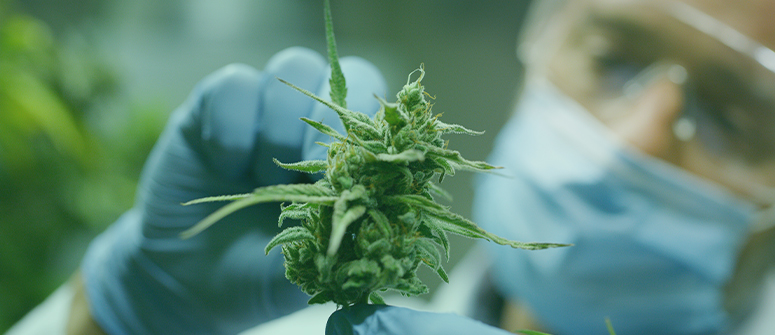
While Skunk #1 is a strain, the term "skunk" has also come to be used to refer to any form of high-potency cannabis, especially in the UK. For example, large-scale media outlets like The Guardian and BBC have consistently referred to high-THC cannabis as "skunk".¹,² This is, however, a misuse of the word—Skunk is a unique cannabis strain, meticulously bred from unique genetics. In the US, cannabis consumers, growers, and even medical patients sometimes also mistakenly use the word skunk to refer broadly to the pungent aromas of weed.
5 popular Skunk cannabis strains
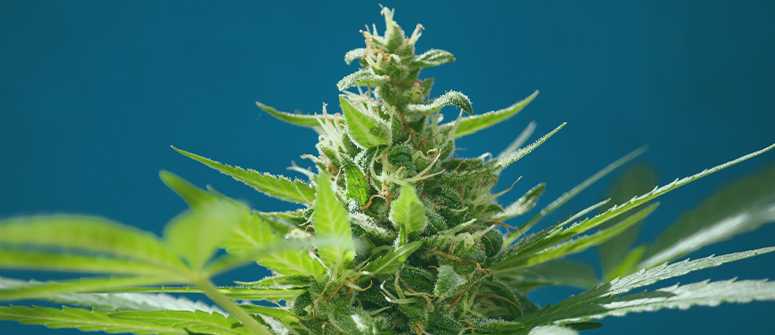
Since its creation, Skunk #1 has been used by breeders all over the globe to create an ever-growing plethora of new hybrids. Below we'll shine a light on some of the most popular Skunk varieties available today.
Skunk #1
Skunk #1 is offered by a variety of seed banks, including Sensi Seeds, Dutch Passion, Grower's Choice, and more. Sometimes marketed as "The Skunk of Skunks", Skunk #1 is said to share the same genetics as the original strain created by Sam the Skunkman way back in the late 1970s.
Combining genetics from South American sativas (Colombian Gold and Acapulco Gold) and Afghani, Skunk #1 is hardy, easy to grow, and super smelly. It produces dense, slightly spongy flowers with great structure and resin production throughout. The aromas of this strain combine earthy undertones with sweet overtones and hints of musky hops and an almost rubber-like tang. Its effects, on the other hand, are energetic and uplifting at first, then calm and relaxing with a soft landing once the high wears off.
Super Skunk
Super Skunk is the result of crossing the original Skunk #1 back with an Afghani indica. Again, a number of seed banks offer this strain, and its exact genetic lineage can vary from one bank to another; some chose to cross Skunk #1 with Afghani #1, while others opted to use strains like Afghani Hashplant and Kush.
In general, Super Skunk plants are indica-dominant varieties, resulting in more compact plants with a slightly shorter flowering time than their Skunk #1 predecessors. Once dried and cured, Super Skunk flowers preserve some of their natural "skunk" aroma, though with more fruity and citrusy overtones. Light her up, and Super Skunk will leave you with a warm buzz that combines notable physical relaxation with a positive cerebral high.
Big Bud
Big Bud is another indica-dominant Skunk descendant known for, you guessed it, producing big harvests of XL flowers. According to cannabis folklore, the original Big Bud may date back to the 1980s, resulting from a cross of Skunk, Afghani, Haze, and Northern Lights varieties. Big Bud is currently available from Sensi Seeds, though other seedbanks have stocked this strain or versions of it in the past. While some seedbanks have used different own genetic recipe for recreating this heavy-yielding classic, Big Bud generally combines Skunk #1 and Northern Lights genes.
The result is a compact hybrid that produces small, dense, and resinous flowers that pack a heavy-hitting stone. Its aroma tends to combine Skunk #1's original "skunkiness" with hints of a molasses-like sweetness and a hashy, peppery finish. Big Bud is also known for its excellent yields and its heavy effects that relax both the body and mind.
Lemon Skunk
Lemon Skunk is a very popular Skunk variety with mixed genetic origins. At the time of writing this article, there are two main Lemon Skunk varieties on the market; one by DNA Genetics, which stems from a cross of two Skunk varieties, and another by Green House Seed Co., which combines Skunk #1 with Citral (an Indian indica with bold citrus aromas).
DNA's Lemon Skunk is roughly 60% sativa dominant, while the variety by Green House has a 50-50 sativa-indica split. Both strains boast deep green colours and fairly compact growth, as well as good yield potential. In general, Lemon Skunk plants flower in about 8 weeks and deliver dense flowers with underlying notes of Skunk and bold, upfront notes of fresh citrus. Lemon Skunk's effects produce a long-lasting stone that starts in the head before washing over the entire body.
Orange Bud
Orange Bud is a Skunk variety created by Dutch Passion and rumoured to preserve some original Skunk #1 genetics. Today, Orange Bud is still exclusively sold by Dutch Passion, and remains a popular strain among growers and, particularly, Dutch coffeeshops.
As its name suggests, Orange Bud has a sweet aroma that couples the earthy notes of original Skunk with ripe orange and nectarine overtones. Orange Bud is known for being easy to cultivate and produces great yields both indoors and outdoors. Keep in mind, however, that this strain is sativa dominant and known to stretch to almost double her height once in bloom! Its flowers are bright green, riddled with bright orange pistils, and produce a strong, uplifting buzz.
Why is Skunk weed still so popular?
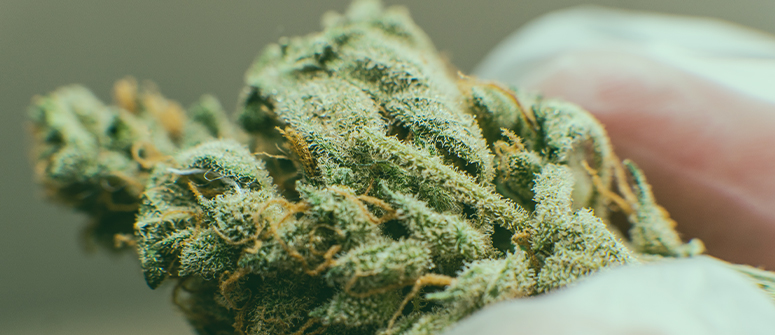
Ever since it was created in the 1970s, Skunk has held its place as one of the world's most popular cannabis varieties. Growers love this strain for its resilience, compact nature, and great yields. Meanwhile, smokers and medical patients continue to love her well-balanced effects, which couple an uplifting cerebral buzz with a soothing, underlying body stone. And who could forget her aroma? Skunk is known to have a complex stank that combines earthy aromas with rubbery overtones, hints of musky hops, and even sour notes of cheese. Even today, with endless strains to choose from, cannabis lovers continue coming back to Skunk for a delicious smoke and reliable growing experience.
References:
1. Gage, S. So smoking skunk causes psychosis, but milder cannabis doesn't? The Guardian. https://www.theguardian.com/science/sifting-the-evidence/2015/feb/16/does-smoking-skunk-cause-psychosis-but-milder-cannabis-doesnt. Published February 16, 2015. Accessed January 5th, 2022.
2. Roberts, M. Most UK cannabis 'super strength skunk. BBC. https://www.bbc.com/news/health-43196566. Published February 28, 2018. Accessed January 5th, 2022.





